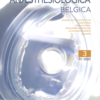Veno-venous Extracorporeal Membrane Oxygenation for pregnant women with Acute Respiratory Distress Syndrome: a narrative review
Acute Respiratory Distress Syndrome, Veno-venous Extracorporeal Membrane Oxygenation
Published online: Dec 03 2022
Abstract
Acute respiratory distress syndrome remains an uncommon condition during pregnancy. In patients with severe acute respiratory distress syndrome, when oxygenation or ventilation cannot be supported sufficiently using best practice conventional mechanical ventilation and additional therapies, veno-venous extracorporeal membrane oxygenation may be considered. In the past two decades, there has been increasing adoption of this technique to support adult patients with refractory acute respiratory distress syndrome. However, its use for the management of pregnant women is rare and remains a challenge. This narrative review addresses acute respiratory distress syndrome and its management during pregnancy, and then focuses on indications, contraindications, challenges, potential complications, and outcomes of the use of veno-venous extracorporeal membrane oxygenation for acute respiratory distress syndrome in the pregnant patient.
